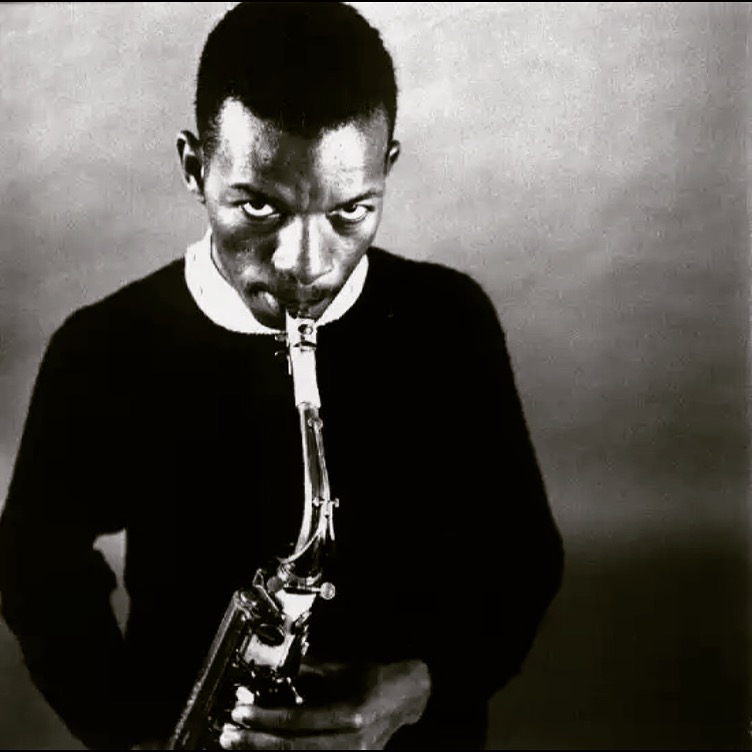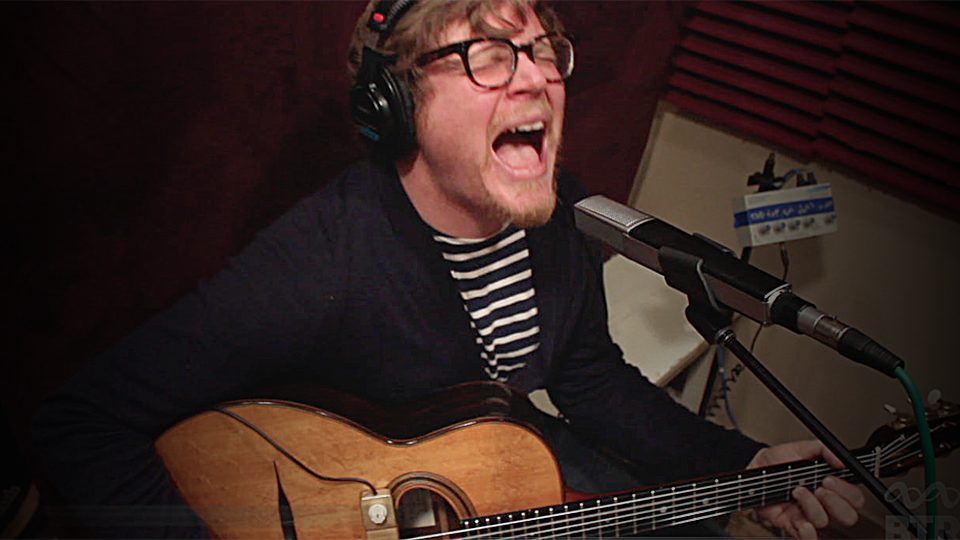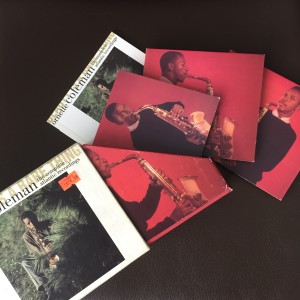
Ornette Coleman and Music Therapy
Ornette Coleman, one of the most legendary and influential musicians of all time, passed away on June 11th, 2015, at the age of 85. I first heard of Ornette when my teacher Omar Tamez got me into all these amazing jazz albums back in Monterrey, Mexico. I also remember that during my first year at Berklee College of Music, there was a time when I couldn’t stop listening to the “Beauty is a rare thing” box set I bought at one of the CD stores around school. It was the summer of 2006, and I remember this music had a big impact on me, as I searched for my own identity while living in a new country within the structure of formal music education.
The music of these records really moved me. It felt so organic, honest, and personal. I loved the melodies, the interaction, the feel. One of my favorite pieces was “Una Muy Bonita” (1960), which featured the ‘original quartet’ formed by some of my favorite musicians (Ornette Coleman-sax, Don Cherry-trumpet, Charlie Haden-bass, and Billy Higgins-drums).
Ornette is regarded as one of the pioneers of free jazz, partly because of his album “Free Jazz” (1960), in which there are two quartets playing together.
https://youtu.be/xbZIiom9rDA
But even if regarded as a pioneer of free jazz, Ornette’s work still relied heavily on composition. These were often melodies without a set sequence of chords, played by a band without a piano player. Ornette liked to improvise without feeling confined to a pre-conceived harmonic structure, and his play in between notes was often perceived as out-of-tune by colleagues and critics.
https://youtu.be/bJULMOw69EI
The day Ornette passed away, his influence was felt on many circles in social media, where countless people expressed gratitude and admiration for his life and vision. Many of the comments stated by musicians and artists identified Ornette as an influential source of inspiration in their own search for authenticity. Guitarist Pat Metheny wrote about it 16 years earlier in the preface to the book Ornette Coleman: His life and music by Peter Niklas Wilson:
“He has inspired me -and by this time it must be thousands of other musicians- to answer to a standard that demands that we look into our own hearts and minds to see what we may have to offer in our own personal musical languages -if we can only muster up the courage to listen to the songs inside of us the way Ornette has done.” – Pat Metheny
The process of exploring our authentic musical self is something we often work with in music therapy. At Berko Music Therapy, we often help people access the music resources they have acquired throughout life, whether their experience includes any form of training or not. This often results in a creative process where people play instruments they have never played before, which can facilitate a deep level of introspection, self-expression and genuineness. Perhaps Ornette was thinking along those lines when playing violin and trumpet, instruments in which he had no formal training.
https://youtu.be/y09k4zyIfO8
One of the things that separated Ornette from other musicians was his uncanny ability to create his own world. Much like a Miro, or a Pollock, he defined his own rules and reached a very unique and personal level of creative expression while defying established artistic and societal norms and mediums. We can learn a lot from the expansive ways in which Ornette thought about music. In the following interview, he at times almost sounds like a music therapist.
“My real concern for the things that I would like to perfect in music is to heal (suffering, pain, solitude), when you are depressed, music seems to be a very good dose of light that causes people to feel a lot better.” -Ornette Coleman
More selected videos:
Learn More

Miles Davis – Adapting Through Time
Miles Davis was born on May 26th, 1926, in Alton, Illinois. He would go on to become one of the most celebrated artists of all time through an illustrious career as a trumpet player, jazz musician, composer, and bandleader. Recently on the 88th anniversary of his birth, the street where he used to live in Manhattan’s Upper West Side was renamed ‘Miles Davis Way’.
To honor that, we will look at one of his greatest traits: the ability to understand and adapt to his surroundings through time.
Perhaps similarly to Picasso or Bob Dylan, Miles remained on the edge by changing styles and approaches multiple times, depending on what was happening in the world around him.
He continuously surrounded himself with the brightest young musicians of the time. John Coltrane, Wayne Shorter, Herbie Hancock, Tony Williams, Keith Jarrett, Chick Corea, Jack Dejohnette, Dave Holland, were among those hired at a young age by Miles before going on to become huge names themselves.
Let’s look at a brief summary of the different periods of his career.
Bebop; The early beginnings. (mid 40’s)
At 18 years old, Miles Davis moved to New York City to attend Julliard School of Music and meet his heroes Charlie Parker and Dizzy Gillespie. He soon got to play in Parker’s band.
Becoming A Leader (late 40’s, early 50’s)
Miles was an innate leader and quickly started recording his own albums with the best musicians in town.
https://www.youtube.com/watch?v=gHKnvwoGg0Y
Orchestra (Late 40’s and late 50’s)
He collaborated with the brilliant arranger Gil Evans in an orchestral setting. Together they recorded beautiful albums like Birth of The Cool, Porgy and Bess, Sketches Of Pain and Miles Ahead.
https://www.youtube.com/watch?v=lvcU_v8ruGE
First Quintet (Mid 50’s)
The first quintet was his first great band. It had what many consider to be the greatest rhythm section of all time with Philly Joe Jones (drums), Paul Chambers (bass) and Red Garland (piano). It also had John Coltrane. Miles and Coltrane were very different and created an exciting contrast. (Coltrane comes in at 2:35).
Kind of Blue (Late 50’s)
Coltrane was still in the band but the rhythm section changed. The band got into modal music with very few chords and basically only one scale. This is a live version of “So What”, a tune from , Kind of Blue, one of his most famous albums.
Second Quintet (mid sixties)
At this point Miles had a completely new band with Tony Williams (drums), Ron Carter (bass), Herbie Hancock (piano) and Wayne Shorter (sax). Coltrane and Ornette Coleman were among those playing freer forms of jazz with their own bands. Miles incorporated certain aspects of free jazz with this band. This is also one of the greatest rhythm section of all time.
Electric (70’s)
Miles would not pass the opportunity to play for huge crowds when electric instruments and amplification made it possible. He decided to go electric and play open rock grooves. The album Bitches Brew is from this time. This is at Isle of White festival.
http://youtu.be/GmJwV3Xkl8M
80’s
Miles embraced the decade and got into the vibe of the time. He played several hits including Michael Jackson’s Human Nature.
In 1991, Miles died of health complications at the age of 65. What would Miles be playing today? The question will forever linger.
Learn More
Oliver Sacks’s Life Lessons
A few weeks ago, the great neurologist/writer Oliver Sacks reflected in a New York Times column on the experience of turning 80 years old.
He embraces the new experience of approaching the end of his life.
“I often feel that life is about to begin, only to realize it is almost over.”
Learn More
The Mind Behind the MegaFauna: An Interview With Noah Lit
After his indie rock band Oliver Future broke up, songwriter/vocalist/guitarist Noah Lit dug deep into his soul (a.k.a his record collection) to find a new direction. A mixture of Django chords with Mingus arrangements, atmospheric acoustic textures and apocalyptic lyrics, creates a curious intricate monster that sounds something like “Radiohead songs played in the 1930’s”. (more…)
Learn More
On Hope and Survival
Today is Yom Hashoa; Holocaust and Heroism Remembrance Day. On this day we commemorate the death of approximately 6 million Jews who were systematically and methodically murdered by the Nazis.
Among those murdered were my grandfather’s parents and three of his brothers. My grandfather was part of approximately 20% of Slovakian Jews who somehow managed to survive. His name was Berko. (more…)
Learn More
